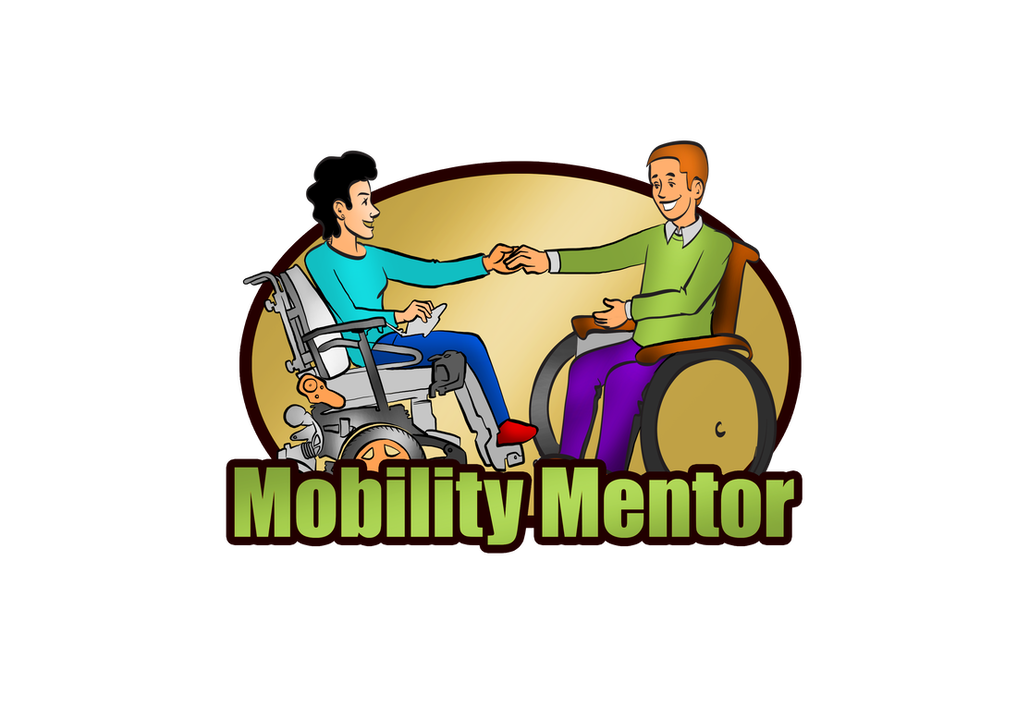|
What do you to if you need to check on a relative and you live far away from each other? Traditionally this has been a very difficult situation to solve. However, using technology to our advantage there may be a plausible solution. It's called the Care Hub. This post is not sponsored. I am just here to provide some information that may be useful. Amazon is coming out with a new product called the Care Hub in 2021. The video below is a prototype of the Care Hub. The Care Hub was created by a family who lived long distances from each other and wanted a way to keep in touch with there mom in case she had a problem. Well, Amazon has acquired this technology and will be coming with the Care Hub at some point next year. Do you think the Care Hub will be a useful piece of technology or not? Let's discuss. Leave a comment.
3 Comments
I love Amazon! Yes, I know, some people don't like Amazon for a myriad of reasons. But for me, the pros of Amazon outweigh the cons. This year Amazon prime day is October 13 and 14. (Starting October 13 at midnight Pacific Standard Time.) This year Amazon is coming out with a product called Amazon Halo. It's a wearable fitness band that tracks a person's physical activity, body composition via 3-D imaging, tone of voice analysis, and sleep. At the present moment, an Amazon Halo is only available for preorder via invitation. I find the band intriguing, so I signed up to receive an invitation. Then I read the following details on Amazon's website: " Some features may not work for everyone. Body composition supports those aged 18+. However, it has reduced accuracy for customers over 500 pounds or 50% body fat, pregnant women, those who use wheelchairs, and people with certain physical differences like missing or prosthetic limbs. We are continually working to support more body types." I'll be honest. I'm interested in seeing if the Halo can provide any benefit for people with disabilities. So if I receive an invitation, I will buy it and try it out and write a product review. You might be saying to yourself, Marissa, if this product is not accessible to a person with a disability within Amazon's product details, why would you try the Halo in the first place? My answer is simple. The Apple watch has been touted to save people's lives by monitoring heart rate and other functions. I wish to send Amazon and other tech companies that make wearable bands a message that such devices should be accessible and usable by everyone. I would be happy to assist Amazon and any other companies creating fitness bands who wish to incorporate people with disabilities in their user testing and consumer base. Would you be willing to try out an Amazon Halo? Let me know in the comments. Every July 26, the anniversary of the Americans with Disabilities Act is a day full of mixed emotions for me. I am grateful for my brothers and sisters who would come before me. Their activism work has allowed me to go to attend public school. It's more than that I've learned from my disabled elders that we have a history all our own. With my conflicted feelings of the day, I wish to post two articles that sum up my feelings pretty well. The first blog post is from Imani Barbarin, of crutchesandspice.com. How To Properly Celebrate A Civil Rights Law During a Pandemic In Which Its Subjects Were Left to Die: The Americans with Disabilities Act. The second article I wish to share is The Next ADA: The Rights Americans with Disabilities Still Need to Thrive written by Karin Willison who is a contributor for The Mighty a digital community created to bring people with heath challenges together. I agree with Karin. There are lots of ways the ADA can be expanded. This is what gets me excited in regards to the next 30 years is to see how our community will grow and how we can work together to bring about civic change. In my next blog post, I will discuss four other ways the ADA can be expanded upon to enrich the lives of people with disabilities.  Corn Summer Salad: Corn, Kale, Romaine lettuce, Tomatoes, Cucumber, Salt and Pepper. Corn Summer Salad: Corn, Kale, Romaine lettuce, Tomatoes, Cucumber, Salt and Pepper. A couple of weeks ago, I posted about a spring mix salad that I’ve frequently been making. This week I have a summer salad recipe for you (as you can see.) This salad was so good that all it needed was salt and pepper. What’s your favorite way to eat your veggies? Let’s talk about it in the comment section. I also have a video on the history of salad from a YouTube channel called Bengali Black. This YouTube channel is very educational. Bengali Black talks about history from a black perspective. This channel also shows ways that people can put money into the black economy. This YouTube channel is definitely worth watching.  We are gaining new information about the coronavirus. I wanted to share The Daily Podcast of July 6, 2020, as well as an article from News Break, 'This One Overlooked Factor May Be What's Spreading Coronavirus.' The list of symptoms that people are exhibiting from the coronavirus is becoming more extensive. If you are feeling ill, call the advice nurse. See what they say. Advocate for yourself, and if you feel the need, request to speak to a COVID-19 doctor. It's better to be safe than sorry. While at home, you may wish to open your windows frequently, and if you have air filters, clean them often as well. While outside, please continue to wear a mask!  One of my attendants became sick in early February. I initially thought she had just a mild case of the flu. But, she quickly developed a severe respiratory infection. By early March, all of my attendants had become ill to some extent. All of my attendants had a cough to varying degrees. We didn't know at the time to wear masks and I in the beginning of March I thought I had a simple cold that would go away on it's own. By mid-March however, I called the advice nurse and she put me in touch with a doctor in my county specializing in COVID -19. Looking back at the situation I probably should have called the advice nurse much sooner. He suggested that I keep my distance from my sickest attendant. I gave her errands to run but insisted that she leave the bags outside my home. My other attendants came into work, but I shortened their shifts as much possible. I was considering going to the ER. One of my friends, who is an acupuncturist, strongly suggested against it. She said that if I didn't have COVID, catching it in the hospital was a significant possibility. Knowing this information made me extremely nervous. I've had bronchitis and pneumonia in the past. But the pain in my lungs I had this go-around was nothing like I've never experienced before. There were two nights specifically, where I was afraid to go to sleep, thinking that I would not wake up the next morning. I had long discussions with friends daily about whether to go to the ER. Another reason I was so concerned about going to the ER was because of possible medical rationing. My suggestion is that if you are ill call an advice nurse, especially with COVID on the rise. Don't wait to call like I did! Here are Some Coronavirus Resources: In March 2020, the Disability Rights Education Defense Fund (DREDF) fund started writing some COVID-19 resources for healthcare providers and people with disabilities.
I hope you stay well. I hope that if you need medical care due to COVID-19, these DREDF's resources are helpful to you.  Spring Apple Salad Spring Apple Salad I would like to announce a new feature called the Recipe Corner. This is where I will share my favorite recipes with you. Today's recipe is a summer salad that is very adaptable. The ingredients are the following:
The dressing is simple and delicious. It's only fresh squeezed lemon juice and apple cider vinegar. I generally put a hefty amount of fresh lemon juice to 2 to 3 tablespoons of apple cider vinegar.
 In mid-March, when we started having product shortages due to the craziness brought on by the COVID-19 pandemic, I became nervous. ( I know I wasn't alone in this feeling.) With the shortages of fresh produce, milk alternatives, and other items that I would typically eat. I was wondering what to do. Luckily I had some friends that went shopping for me and found a good supply of soups and fresh produce. It was a great gift package of food. As weeks went on (as I'm sure you have experienced), deliveries were slow and best, if you were able to schedule them at all. Generally, I live mostly on the vegan side of the street. Due to the food that my friends and I were able to find, I suspended my vegan eating habits for a while. I was wondering where I could find fresh produce consistently. A Facebook friend suggested that I look into community-based agriculture (CSA's) and see if there were any farms in my area. I live in a very urban area with low-income housing in my neighborhood. I thought for sure community-based agriculture was not in my area and, if so, was costly. To my surprise, I found several CSA's near me with several different price points. I thought this was great, and then I thought, there's probably a huge waiting list, and I probably would have to wait several months to join. But in fact, I was able to join a CSA very close to my home in a matter of weeks. I am excited as I wait for my first box to arrive shortly. I found some local CSA's via a website called Local Harvest. I found some more local CSA's via Yelp. Some CSA's have programs for people on fixed incomes or for families that are low income. My CSA has these such programs. Now an abundance of organic produce at a price I can afford will be delivered to my door. Another way to find a CSA near you is to do a simple internet search. Put your closest metropolitan city and the phase CSA in the search bar. I am also in the process of putting together a list of CSA's and fresh food delivery services as we get through this pandemic together.  Person wearing a white mask. Person wearing a white mask. In my last blog post, COVID and My Attendant Care, I was dealing with an attendant who refused to wear a mask when in my house. Due to the situation I decided to write up a COVID Policy for all of my attendants to follow. Here's what I've written so far: Due to the coronavirus, I have listed some new expectations so we can be safe and healthy in my home. These expectations are in effect immediately until further notice. 1. Please wear a mask every shift 2. If you forget your mask, please go home and get it. If you don't, you will not be let into my apartment and will not get paid for that shift. 3. Please wear gloves. If you don't have gloves, they will be provided for you. 4. Please clean every surface that you touch. (This includes but is not limited to the front doorknob, refrigerator door handles, counter tops in the kitchen and bathroom, as well as my durable medical equipment. (i.e., my crutches and wheelchair.) 5. Please be prepared to do additional cleaning when asked 6. If you are sick in any way, a cough, sneeze, sniffle, or fever, please call me as soon as possible so I can get a replacement for your shift. 7. Please limit skin to skin contact whenever possible when doing my personal care routine. 8. Please social distance whenever possible. 9. Please take your temperature (when asked) before coming to work. 10. Please bring some spare clean clothes ( that have not been worn outside) to wear at work. What do you think about my current policy? If you like it, feel free to use it for your own purposes. If you have suggestions to improve the policy please let me know. Let's have a discussion!  Coronavirus Coronavirus Most of my attendants have been working with me for close to a decade. As I started learning how serious the coronavirus is, I required my attendants to wear masks and gloves which I provided for them. All of my attendants were receptive to this policy except one. This attendant would argue with me and tell me that the virus was just a form of the flu, and people would get over it. To be honest, I sort of believed him in the beginning. But then one of my other attendants came down a serious respiratory infection with a severe cough and occasional fever. My attendant was told it could possibly be bronchitis but to be perfectly honest; she doesn't know if it was COVID. Then two more of my attendants became ill and I became sick behind all three of them. When I became sick doctors were no longer accepting in person appointments. My friends and attendants were strongly recommending that I call urgent care. I first called an advice nurse. I had severe nasal and head congestion with a significant cough. The nurse told me that, 'She was concerned about me' given that I am physically disabled and have asthma. The advice nurse put me in contact with a COVID doctor. After talking to the doctor, he explained that it was quite possible that I could have bilateral pneumonia. He treated me for it. He then went on to tell me that in his findings, bilateral pneumonia is a form of COVID. This is why my attendant that has worked with me for 10 years and won't wear a mask is so upsetting. He's risking my health and the health of everyone who comes into my apartment, including his own. I will be writing an official policy regarding how I wish all my attendants function in my house in order to try to keep the coronavirus at bay. I am willing to hear suggestions in regards to this coronavirus policy. But if this attendant does not abide by the policy, I will have to let them go. Are you or other folks with disabilities you know, dealing with similar issues? Do you have ideas for a COVID - 19 attendant care policy? Let's talk about it. |
AuthorWrite something about yourself. No need to be fancy, just an overview. Archives
October 2020
Categories |

 RSS Feed
RSS Feed